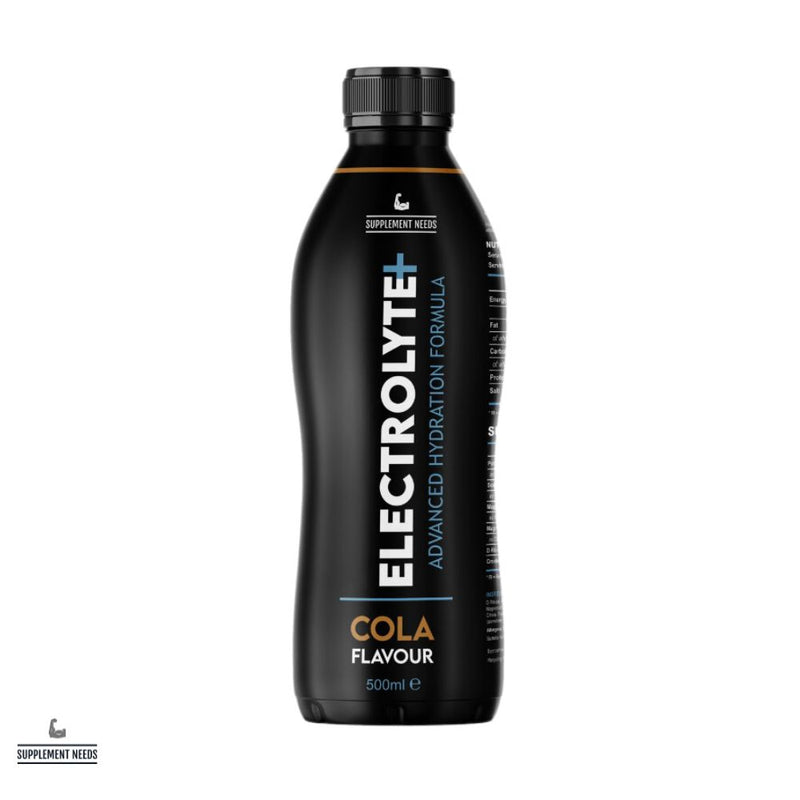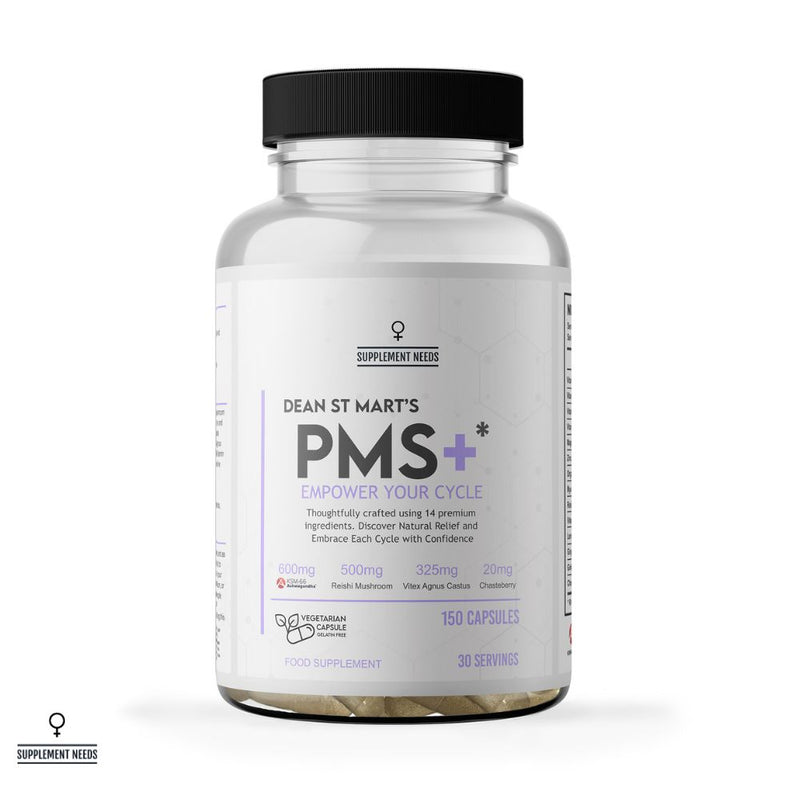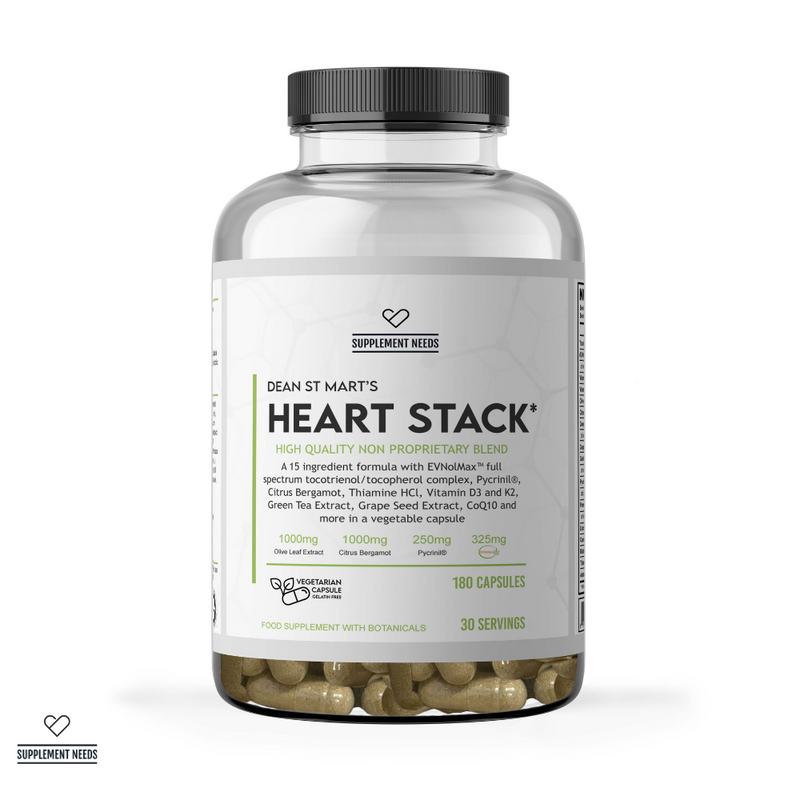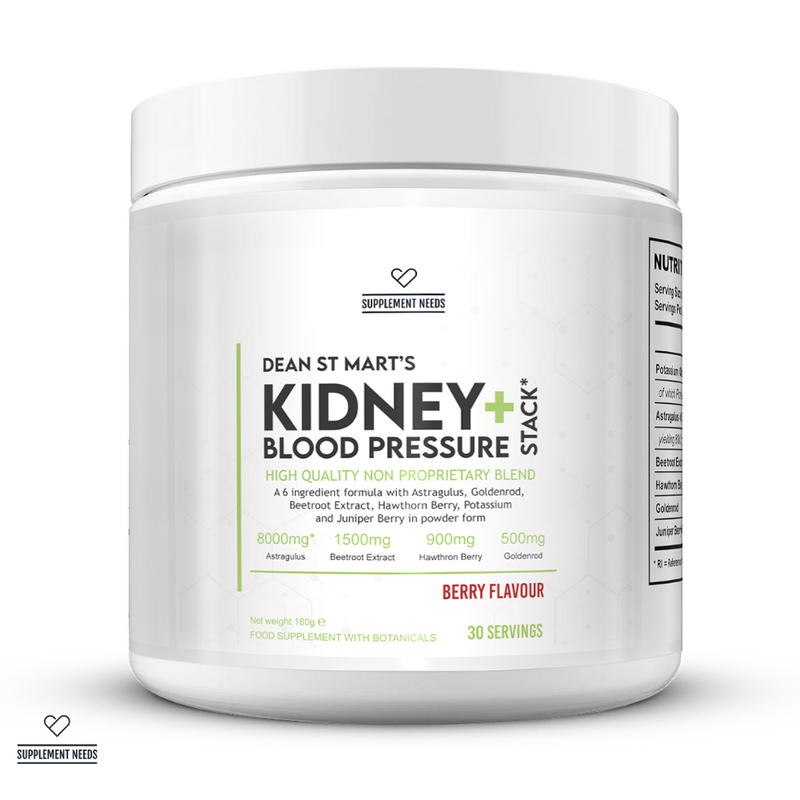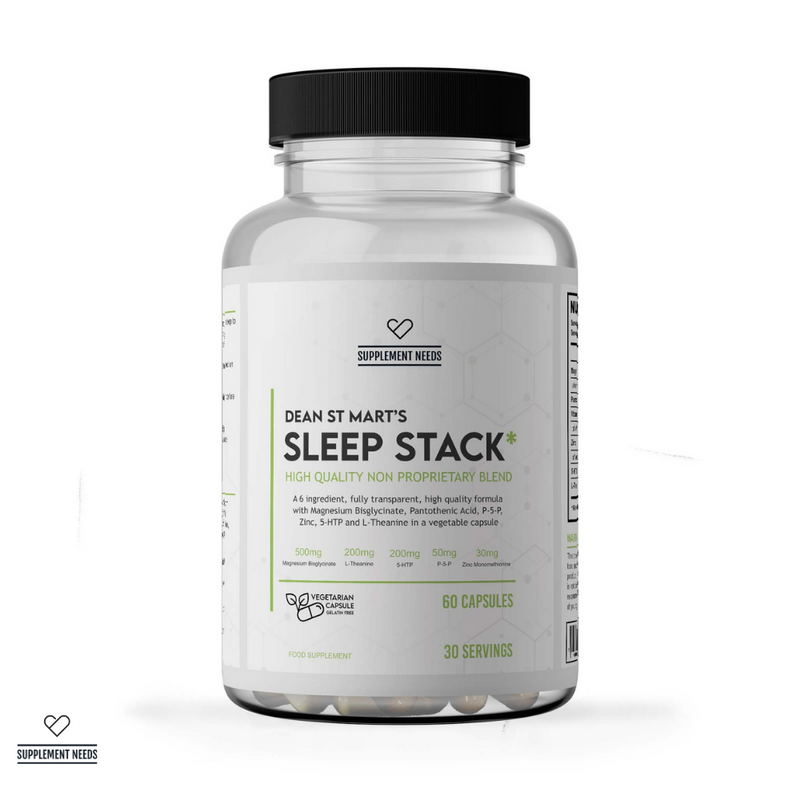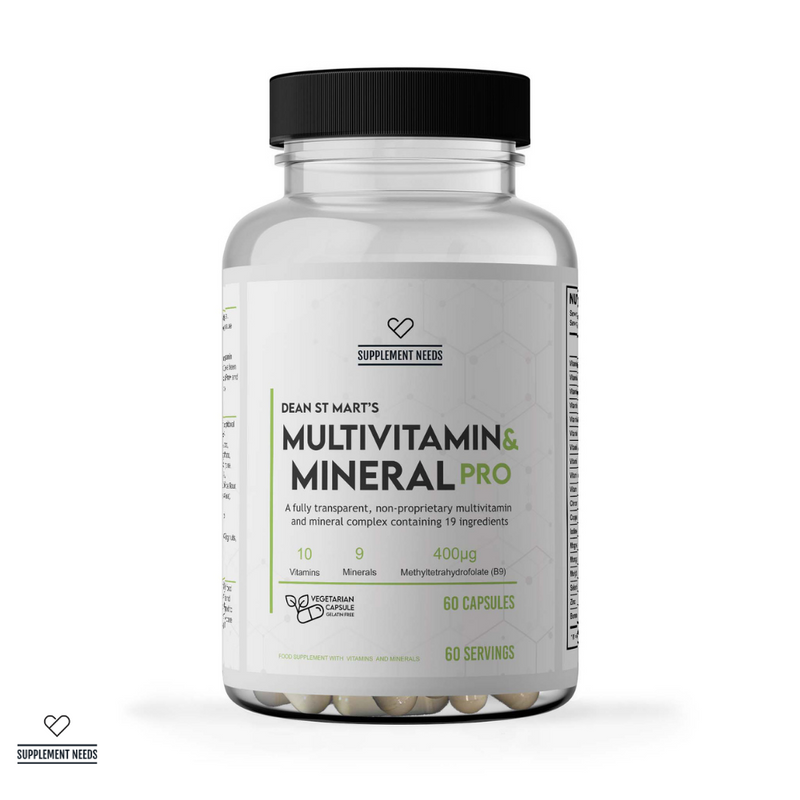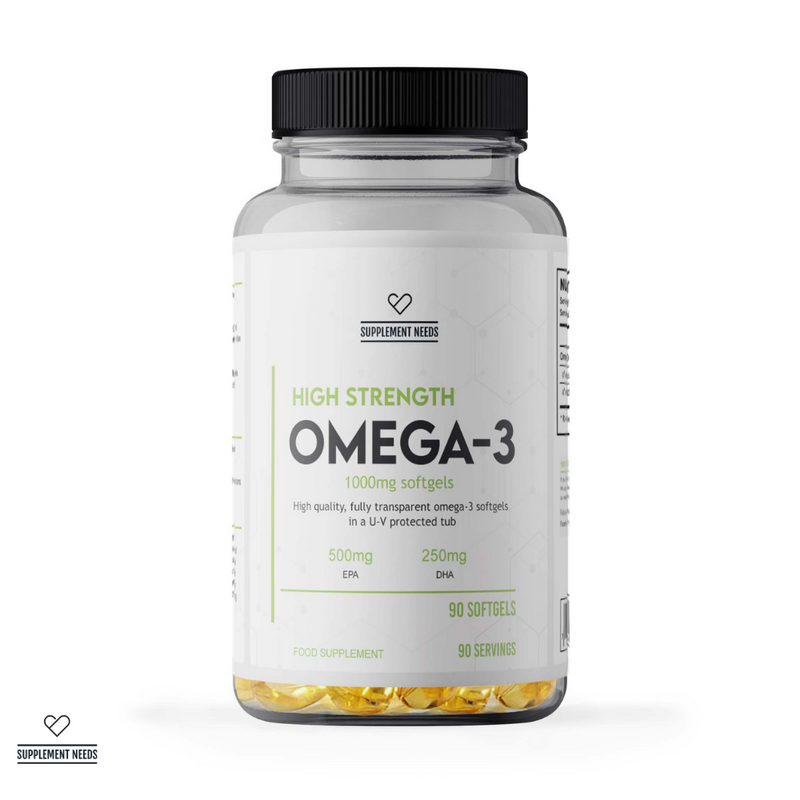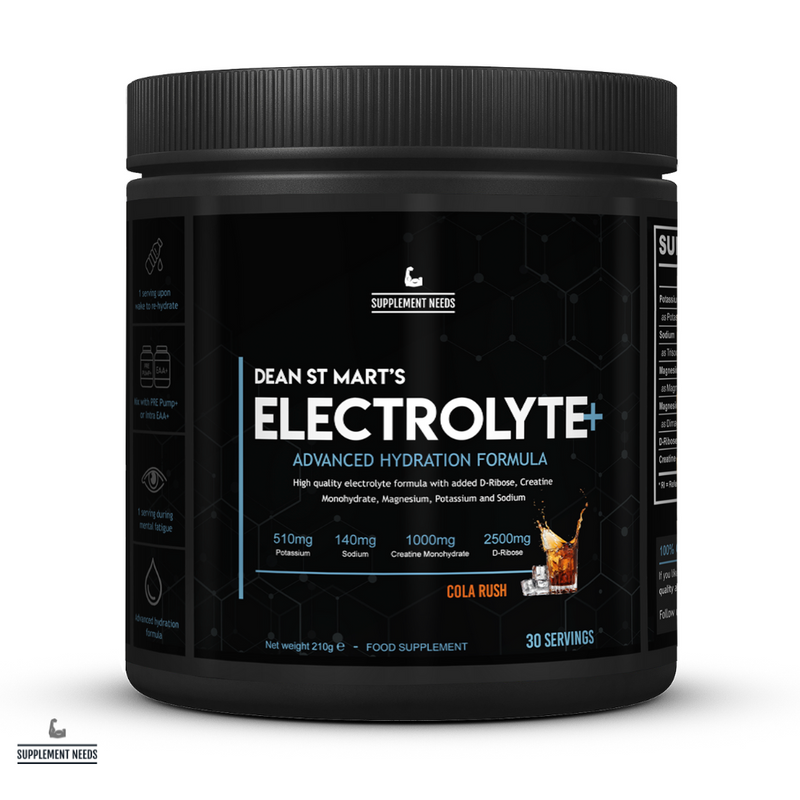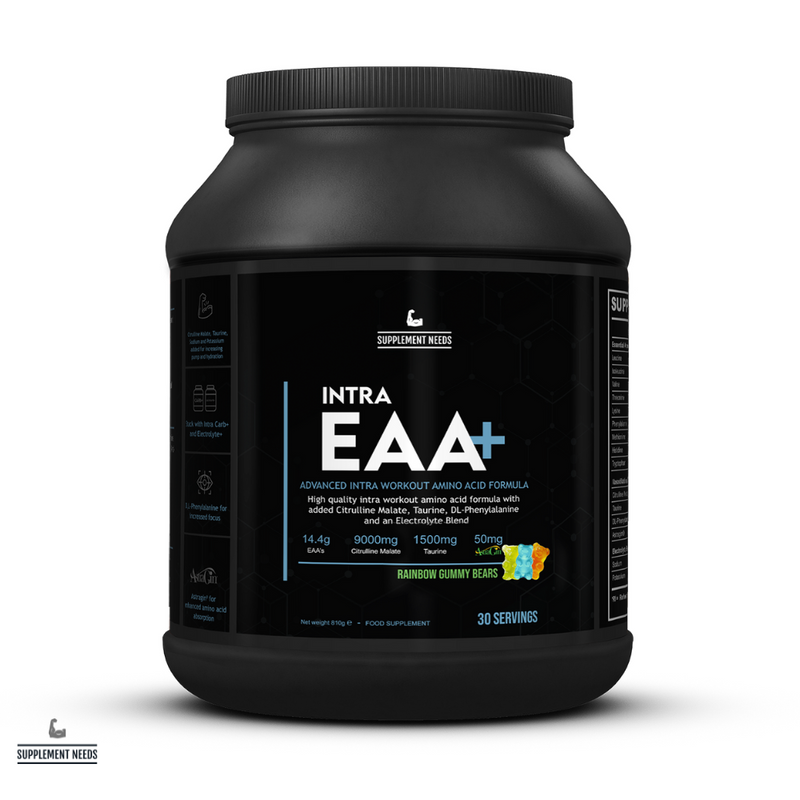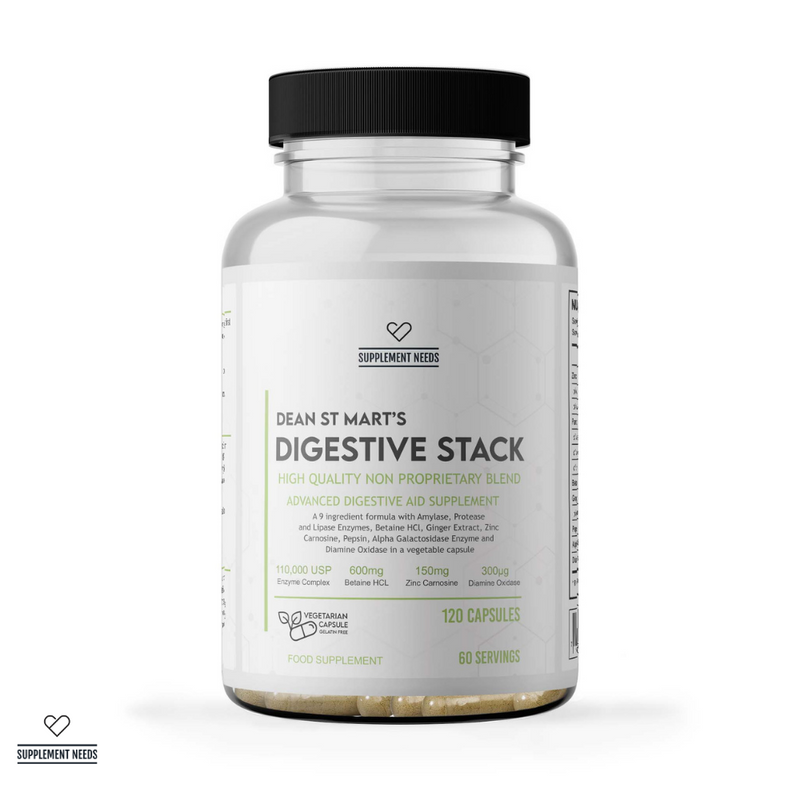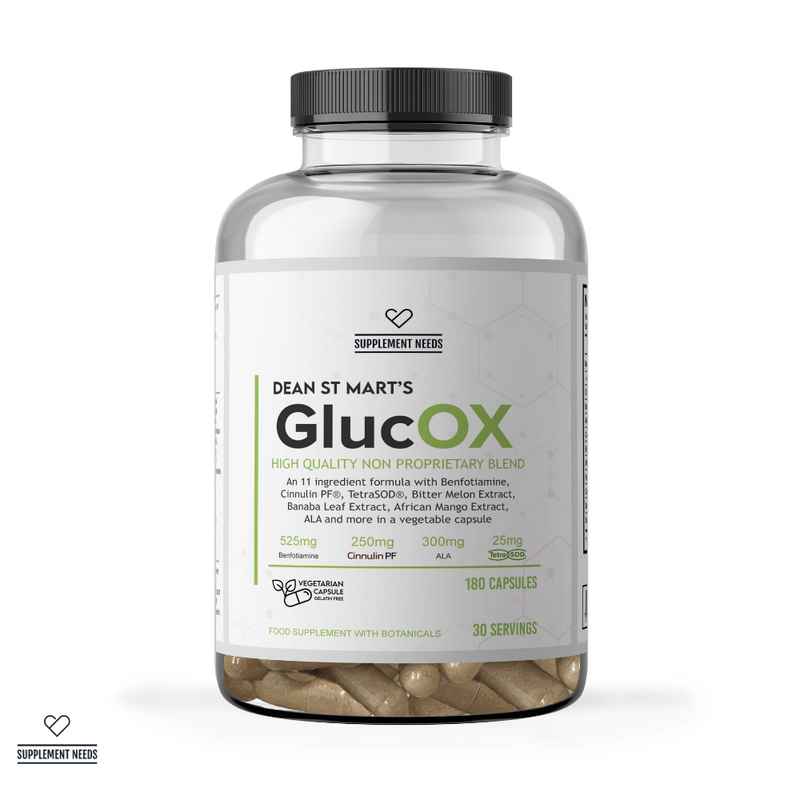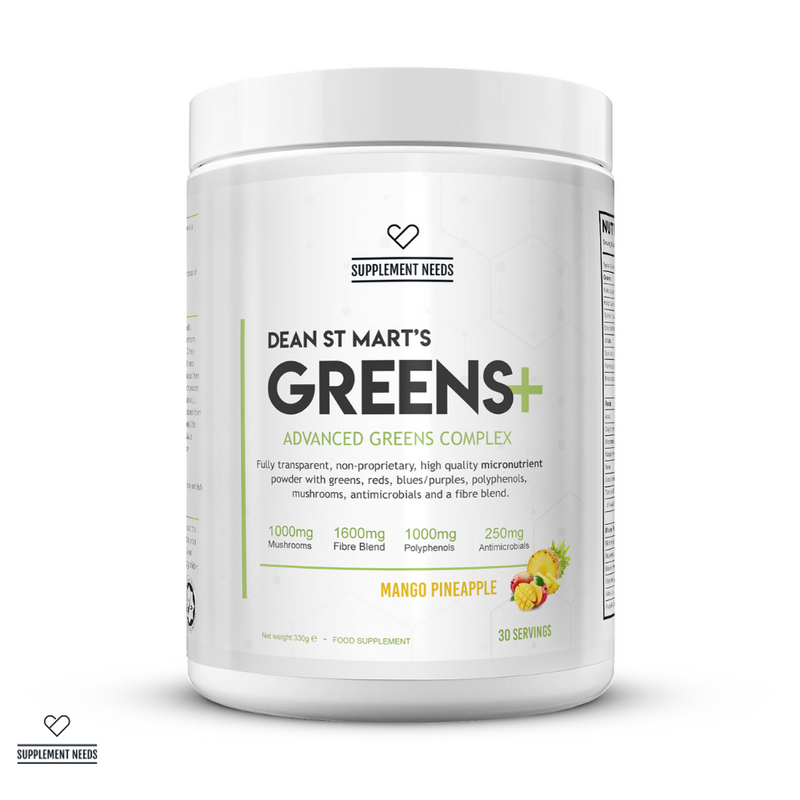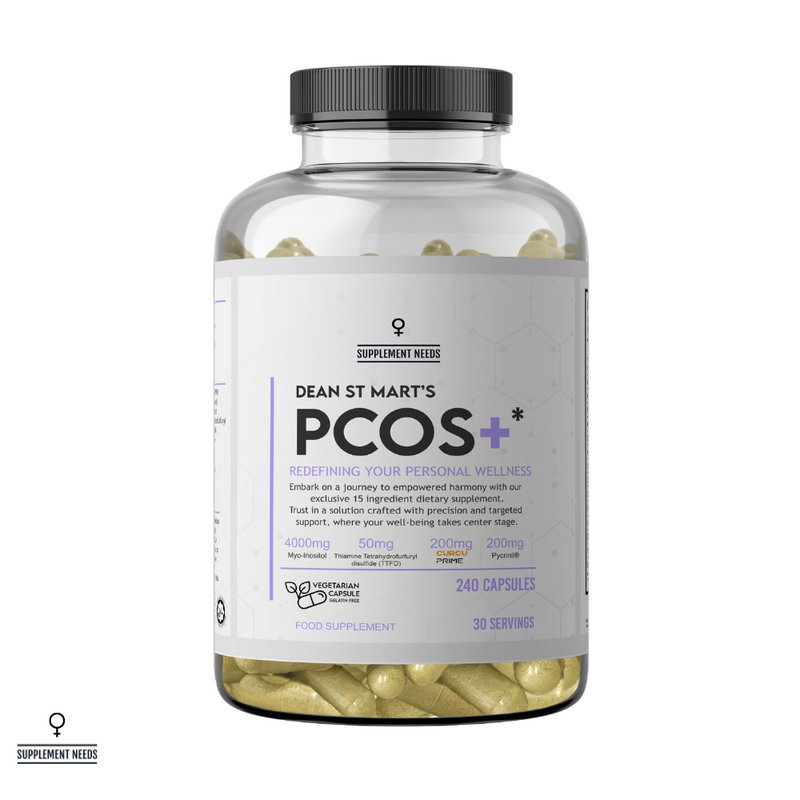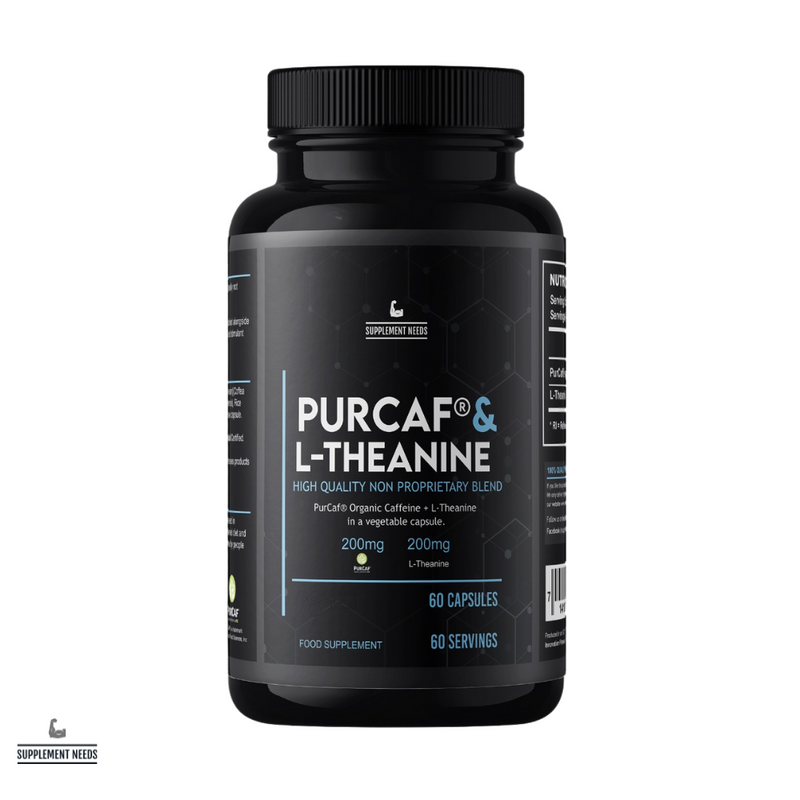Have you ever heard the word ‘microbiome’? It’s a word that’s starting to become more and more popular as everyone from fitness fanatics to the media wake up to the importance of gut health. If you want to learn more about the gut microbiome and how it can impact your health, keep reading…
What is the microbiome?
From the pages of lifestyle magazines to the airwaves, you’re bound to have heard the term ‘microbiome’. It’s a term that’s exploded in popularity, and for good reason.
But, don’t just take our word for it. A quick analysis of search trends shows that more and more people have been searching for ‘microbiome’ over the last five years.
Why? Well, let’s take a look…
We’ll kick things off with a definition.
We’re going to differentiate between a microbiome and the microbiome.
A microbiome - in the generic sense - is simply a community of microorganisms (also known as a microbiome consortium) that can be found living together in a particular habitat. These microorganisms can include bacteria, fungi, viruses, protists, and archaea.
Think of microbiomes as being a group of organisms that have coevolved and adapted over time to work together within a particular environment.
Perhaps the most well known scientific definition of a microbiome was coined in 1988. It reads as follows:
“A characteristic microbial community occupying a reasonably well-defined habitat which has distinct physio-chemical properties. The term thus not only refers to the microorganisms involved but also encompasses their theatre of activity”1.
Fun fact - credit for the term ‘microbiome’ goes to Dr. Joshua Lederberg, a Nobel Laureate who proposed that a comprehensive view of human genetics and physiology must encompass both human and microbial genetics2.
Endosymbiotic versus ectosymbiotic microbiomes
Which brings us on to our next point; microbiomes (a.k.a. Microbial communities) can be either endosymbiotic or ectosymbiotic.
We appreciate we’re getting a little technical here, so let’s break things down into simpler terms.
Endosymbiotic simply means that the microbiome exists inside another organism (such as an animal or human) hence the word endo (from the Greek ἔνδον meaning ‘within’). Endosymbiotic microbiomes exist within an organism on a symbiotic basis meaning both the microbiome and the organism benefit from the interaction - hence the word symbiotic (from the Greek συμβιόω meaning ‘to live together’).
By logic, it follows that ectosymbiotic microbiomes are those that live on the outside of an organism. Thus, ecto - which comes from the Greek ektos, meaning outer. As with endosymbiotic microbiomes, ectosymbiotic microbiomes generally (but not always) have a symbiotic relationship with their host. A classic example are groups of bacteria that ectosymbiotically live on the root epidermis of plants.
As you can see then, microbiome doesn’t just refer to a single, generic group of microorganisms, but a wealth of different microbiomes - including the human microbiome.
What is the human microbiome?

The human body is host to myriad groups of microorganisms. The most well known is the group of microorganisms in your gut - known as the gut microbiome. However, your body is also host to microorganisms elsewhere, including; the mouth, skin, and urogenital region.
In the remainder of this article, we’ll be focusing on the gut microbiome and gut health. This is arguably the assemblage of microorganisms that can have the most profound effect upon your health and wellbeing.
It’s also a sizable entity in its own right. In fact, the gut microbiome itself can weigh up to 2kg, leading some scientists to consider the gut microbiome to be another organ as distinct from others in the body3.
So, with that in mind, let’s explore the gut microbiome in more depth!
Where is the gut microbiome located?
As we’ve written previously, the gastrointestinal tract is a large, many-parted system, consisting of a variety of hollow and solid organs.
So, where, within this wide-ranging system is the gut microbiome?
The main bulk of your gut microbiome is found in the following places:
- Stomach.
- Small intestine:
- Duodenum.
- Jejunum.
- Ileum.
- Large intestine:
- Cecum.
- Colon (transverse, ascending, descending).
In studies of the spatial compartmentalisation of the gut microbiome, it has been postulated that the bulk of the microbiome is located within the cecum within the large intestine. In turn, the microbiome within the cecum is localised within two compartments; the lumen and the crypts4.
Where does the gut microbiome come from?
Having read all this so far, you may be wondering, “where exactly does the gut microbiome come from?”, “how do all those microorganisms actually end up in your gastrointestinal tract?”.
The answer involves a number of stages.
The scientific literature largely coalesces around the consensus that the gut microbiome first begins to form when you are born - passing through your mother’s birth canal5. As one study6 - which compared vaginally-delivered infants with C-section delivered infants, ‘In contrast to vaginally delivered infants, the gut microbiota of infants delivered by C-section showed significantly less resemblance to their mothers’.
There is, however, new evidence which suggests that you are also exposed to microbes within the womb. As one study7 suggests, the placenta itself harbours its own microbiome. Upon studying a population-based cohort of placental samples, the study found ‘a unique placental microbiome niche, composed of nonpathogenic commensal microbiota from the Firmicutes, Tenericutes, Proteobacteria, Bacteroidetes, and Fusobacteria phyla’.
Following birth, your gut microbiome will continue to develop as you are exposed to various environmental and dietary factors. As you would perhaps expect, it has been established8 that higher gut microbiome diversity is considered good for your health!
Defining the gut microbiome
Put in simple terms, the ‘gut microbiome’ refers to those microorganisms that dwell within your intestines.
These microorganisms include bacteria, fungi, viruses, protists, and archaea. As a collective, these microorganisms are known as the microbiota, which in collaboration with their ‘theatre of activity’ (e.g. microbial structures and mobile genetic elements etc) collectively form the microbiome of the gut.
Whilst many people will be familiar with bacteria and fungi, they are perhaps less familiar with protists and archaea - so, let’s take a closer look.
Gut bacteria
Bacteria are small, basic, single celled organisms which are an inescapable part of life. They’re pretty much everywhere! Whilst bacteria are predominantly thought of as being pathogenic (that is, disease-causing), there are actually many benevolent forms of bacteria that can be beneficial to your health.
Examining your gut microbiome in particular you’ll find that there are four main bacterial phyla present (phyla is basically another way of saying ‘lineage’ or ‘family’). These four bacterial phyla are:
- Bacillota (Firmicutes).
- Bacteroidota.
- Actinomycetota.
- Pseudomonadota.
Of these four bacterial phyla, it is the bacteroidota that constitute around 30% of all the bacteria found in the gut.
If we want to further understand these bacteria, it’s possible to segment them into two; anaerobic bacteria and aerobic bacteria. Anaerobic bacteria that do not require molecular oxygen for growth. Aerobic bacteria, on the other hand, do require oxygen.
Given the nature of the intestine - which ranges from nearly anoxic conditions (meaning, oxygen-free) through to areas with a partial O₂ pressure of approximately 80mm Hg - it’s perhaps no surprise to find that both anaerobic and aerobic forms of bacteria are present. But, it has been suggested that anaerobes outnumber aerobes by 100-1,000 anaerobes to one aerobe9.
Note - these are the main ‘groups’ of gut bacteria, but the gut is estimated to contain between 500 and 1,000 bacterial species overall10.
Fungi
It comes as a surprise to some people that residing within your gut are a small number of different fungal species!
And, it’s true that fungal species play an important role within the human gut microbiome, ‘helping to regulate host homeostasis, pathophysiological, and physiological processes, and the assembly of the co-residing gut bacterial microbiome’11.
Arguably, the most important contribution of fungi to the gut microbiome is their role in ‘sophistically influencing the assembly and function of the gut bacterial microbiome’. In other words, fungi help to assemble and maintain your microbiome. Studies have suggested that fungi do this ‘through cellular contact, competition or collaboration for available nutrients, production of secondary metabolites and antimicrobial peptides, and physicochemical changes to the gut niche’12.
So, what types of fungal species call the microbiome home? The answer largely depends on your age.
As an infant (1-2 years), Saccharomyces cerevisiae is the dominant species. However, other species include Cytofilobasidium, Ascomycota, and Monographella. By adulthood, however, the fungal composition of your microbiome will usually have changed again.
‘In a healthy adult gut microbiome, Candida, Saccharomyces, and Cladosporium are the most abundant genera’13.
Fast-forward to older age (>65 years) and the microbiome has again changed composition, with Penicillium, Candida, Saccharomyces, and Aspergillus being the most abundant genera14.
Viruses
Whilst your gut microbiome is dominated by bacteria of various species, viruses also account for a proportion of the aggregate microbiome population.
“But”, we can hear you ask, “aren’t all viruses bad?”.
The answer - particularly in the context of the gut microbiome - is no.
The assemblage of viruses within the gut microbiome are known as the ‘gut virome’ and is estimated to be a size similar to gut bacteria, with ‘over 10¹² virus-like particles (VLPs) per person, proportional to individual body size’15.
Of these viruses, there are both symbiotic and pathogenic variants - that is your gut contains viruses that are both good and bad for your health.
When your gut is healthy - these viruses (along with the other microbiota) - co-exist peacefully, with the pathogenic and symbiotic viruses effectively balancing each other out.
But, should your gut microbiome be thrown out of balance e.g. by illness, environmental or dietary factors, or xenobiotics - this can result in dysbiosis16.
Of the viruses in the gut microbiome, they fall into two approximate types; eukaryotic viruses, and prokaryotic viruses. The first of these (eukaryotic) are viruses that infect eukaryotic cells, such as cells in the gut. The latter of these (prokaryotic) are viruses that infect prokaryotic cells - such as bacteria17.
Protists
For many people, the term ‘protist’ is one with which they are unfamiliar. However, once you investigate the term a fascinating world emerges…
There lies a constellation of organisms that are neither animals nor land plants, or even fungi. No, they are a type of organism known as a eukaryote.
Whilst there is not a hard-and-fast definition as to what protists are, it is widely agreed that they are any eukaryotic organism that is not an animal, land plant or dikaryon fungus (examples of non-protist eukaryote organisms include the blue whale and the coast redwood).
Further, protists are generally unicellular and microscopic, and have traditionally been viewed as pathogenic. However, in the context of the human microbiome, there are in fact commensal protists (that is, beneficial protists).
Examples of protists that have been identified in the human microbiome include Pentatrichomonas and Entamoeba dispar.
Compared to the other ‘components’ of the gut microbiome, relatively little is known about the function of protists. Recent studies have suggested that protists may affect their host’s immune responses18.
Archaea
The final family of microorganisms that compose the gut microbiome are archaea. These are single-celled organisms that do not possess a cell nucleus. Because of this latter point, archaea are considered to be prokaryotic.
Whilst knowledge around archaea and their role in the gut (as opposed to other members of the gut microbiome) is limited, studies have suggested that archaea are responsible for important gut processes such as methanogenesis - consuming the bacterial end products of fermentation (including hydrogen, carbon dioxide, formate, acetate, methanol and others) to form gaseous methane19.
How does the gut microbiome affect your health?
Now that we’ve seen what the gut microbiome actually is, and what it’s composed of, it’s time to look at the myriad ways in which it can impact your health (in both a positive and negative sense).
Many people are surprised to discover quite how far-reaching and influential the gut microbiome can be in terms of overall health and wellbeing. So, let’s take a look…
Gut health
Perhaps most obvious, your gut microbiome has a strong influence upon the health of your gut.
Remember, that the gut microbiome helps to digest certain foods, produces gaseous methane, and communicates and interacts with intestinal cells (it also helps to prevent pathogenic bacteria from adhering to your intestinal walls).
In short, a healthy gut microbiome will, in turn, keep your gut healthy.
Should your gut microbiome be out of balance e.g. dysbiosis - then this can contribute to conditions such as irritable bowel syndrome20 (IBS), and even inflammatory bowel diseases such as Crohn’s disease and ulcerative colitis21.
With this in mind, it’s important to maintain the health of your gut microbiome. Bacterial species such as Bifidobacteria and Lactobacilli can actually play a commensal role in gut health as they can prevent pathogenic forms of bacteria from sticking to the intestinal wall. As one study22 characterises their role, ‘an intact intestinal barrier protects the human organism against invasion of microorganisms and toxins’.

Note - if you want to ensure your gut microbiome has sufficient colonies of Bifidobacteria and Lactobacilli, consider supplementing your diet with Supplement Needs Probiotics. This carefully-formulated product contains multiple strains of both Bifidobacteria and Lactobacilli (a total of 16 probiotic strains), yielding 50 billion colony forming units per capsule.
Brain health
Believe it or not, but an increasing body of research suggests that your gut microbiome may have an impact upon your brain and mental health. In fact, some researchers have gone so far to describe this relationship as the ‘brain-gut-microbiome’ axis.
Why?
One area of research focuses on the role that the gut microbiome plays in the production of neurotransmitters. In particular, studies23 focus on the gut microbiome’s role in tryptophan metabolism - and subsequent production of serotonin. As anyone who has even a passing interest in mental health will know, serotonin is an important antidepressant neurotransmitter. So, it’s arguably not too much of a leap to suggest that gut microbiome health can potentially have a link to your mental health.
Studies have reinforced this view, with one group of researchers demonstrating how the microbiota help to regulate 5-hydroxytryptamine, 5-HT (which metabolises into serotonin). In their own words:
“Here, we demonstrate that the microbiota plays a critical role in regulating host 5-HT. Indigenous spore-forming bacteria (Sp) from the mouse and human microbiota promote 5-HT biosynthesis from colonic enterochromaffin cells (ECs), which supply 5-HT to the mucosa, lumen, and circulating platelets”24.
Further areas of research concern the gut’s connection to the brain via millions of nerves. One study25 examined the relationship between the gut microbiome and activation of the vagus nerve. Given that other studies26 have suggested that stimulating the vagus nerve may help with conditions such as depression - the link between gut microbiome health and mental health appears to be reinforced.

Note - if you are keen to maintain the health of your gut microbiome, it is worth considering supplementing your diet with a dedicated digestion-focused multivitamin supplement. These supplements - such as Supplement Needs Digestive Stack - are designed to support overall digestive health, and thus support your gut microbiome.
Heart health
A less well known potential impact of the gut microbiome is upon heart health. In a way, this makes sense when you consider that dietary factors can be major drivers of cardiovascular health conditions.
But, in what way can your gut microbiome affect your cardiovascular health? It comes down to those microorganisms again…
A number of studies27 have suggested that certain gut flora convert Choline and L-Carnitine (which are present in dietary sources such as red meat) into TMAO. Elevated blood plasma levels of Trimethylamine N-Oxide have been linked in limited studies2829 to ‘cardiovascular diseases, especially atherosclerosis and cardiomyopathy’.
However, as you’ll have probably gathered by now, there are both good and bad bacteria present in the gut. With that in mind, consider that researchers have also come to the conclusion that there may be some bacteria that contribute positively to heart health.
This has been reinforced by a study30 of nearly 900 people that found that the gut microbiome helps the body to process and circulate HDL cholesterol (that’s the good kind of cholesterol) and appropriate levels of triglycerides.

Note - if you want to ‘feed’ those beneficial bacteria in your gut, you can do so by eating (or supplementing your diet with) plenty of leafy greens. Leafy greens produce a type of carbohydrate called sulfoquinovose (SQ), a sulfonated monosaccharide. In fact, it is the only sugar molecule that contains sulphur. And, guess what? Bacteria love sulphur!31 Sulphur helps bacteria build protein and thus sustain themselves. If you want an easy and convenient way of adding sulfoquinovose to your diet, why not try Supplement Needs Greens+?
Immune system health
An area that’s beginning to be explored more widely by scientists is the interaction between the gut microbiome and the body’s immune system.
It is believed that many gastrointestinal and systemic immune responses (e.g. chronic inflammation) come about due to disturbances in this interaction between the microbiome and the immune system32.
As one scientist characterises this interaction, ‘The gut microbiome and immune system work closely together. The microorganisms in the gut send out signals that are detected by immune sensors. This allows the immune system to regulate the beneficial bacteria in the gut, helping maintain immune homeostasis. Through this interaction, the adaptive immune system also receives stimuli from harmful substances called antigens, which trigger an immune reaction’33.
Another way of looking at this interaction, is that your gut microbiome effectively acts as the ‘trainer’ for your innate and adaptive immune systems34.
A further study reinforces this view, that the ‘microbiome conditions host immunity through the provision of secondary metabolites, foreign molecular patterns, and antigens’35.
In short, if you want to ensure your immune system is as strong as possible, you should pay particular attention to the health and diversity of your gut microbiome.

Note - if you want to support both your gut health and immune system, consider supplementing your diet with Glutamine. It’s a critical fuel source for both immune cells and certain intestinal cells36. Furthermore, Glutamine has been shown to directly support gut health by helping to sustain the microbiome, increasing the expression of tight junction proteins and the integrity of the intestinal lining, and minimising inflammation37. If you want to supplement your diet with Glutamine, choose Supplement Needs 100% Glutamine today.
How to improve the health of your gut microbiome
We’ve surely left you in no doubt that the health of your gut microbiome is important. From brain health to heart health and gut health to immune system health, your microbiome has a big impact on your overall wellbeing.
So, it pays to take care of it. But, what can you do to support and nourish your gut microbiome?
Eat a range of healthy, diverse foods
This is confirmed by studies which have confirmed that ‘The more diverse the diet, the more diverse the microbiome and the more adaptable it will be to perturbations’38.
Eat a range of fermented foods
Research suggests that the consumption of fermented foods (think sauerkraut, yoghurt and kefir) can boost the health of your microbiome. In particular, the bacteria Lactobacilli - which we saw earlier is a commensal bacterium that can prevent pathogenic bacteria from adhering to the intestinal walls - benefits from the consumption of fermented foods39.
Eat plenty of leafy greens
As we saw earlier, leafy greens contain a type of sugar that is loved by the bacteria in your gut!
Eat prebiotic foods
Have you heard of prebiotic foods? If you want to support your microbiome, eat them! Prebiotic foods are basically foodstuffs that contain a type of fibre that stimulates the growth of healthy bacteria. Examples of prebiotic foods include bananas, apples, and oats40.
Stay hydrated
This may seem like a rather obvious point, but your gut - just like the rest of your body - benefits from proper hydration. In fact, proper hydration has been linked to increased diversity of gut bacteria. Furthermore, your drinking water source (e.g. tap, bottled, filtered) can have a big impact upon your gut microbiota diversity41.
Get plenty of sleep
In what may be a surprising fact for many people, there appears to be a correlation between poor sleep hygiene and the development of gastrointestinal disorders such as gastro-oesophageal reflux disease (GERD).
One study postulates that, ‘Recent studies have suggested that there is a strong association between sleep disturbances and gastrointestinal diseases. Proinflammatory cytokines, such as tumour necrosis factor, interleukin-1, and interleukin-6, have been associated with sleep dysfunction. Alterations in these cytokines have been seen in certain gastrointestinal diseases, such as gastro-oesophageal reflux disease, inflammatory bowel disease, liver disorders, and colorectal cancer’42.
Reduce stress levels
Like many other parts of the body, your gut microbiome can be adversely affected by sustained periods of stress.
In fact, the influence of stress upon the microbiome can be interactive, whereby stress induces changes in the microbiota composition, which in turn exacerbates stress, and so on.
As one study sums it up; ‘stress and depression can reshape the gut bacteria’s composition through stress hormones, inflammation, and autonomic alterations. In turn, the gut bacteria release metabolites, toxins, and neurohormones that can alter eating behaviour and mood. Some bacterial species may encourage dysregulated eating. The gut bacteria may also upregulate stress responsiveness and heighten the risk for depression, which probiotic supplementation may attenuate’43.
Consider supplementation
Ultimately, the key to maintaining a healthy gut microbiome is to nourish and support it - ensuring you are consuming appropriate levels of micro and macro nutrients.
As studies have shown, deficiencies in important vitamins and minerals can have a negative impact upon microbiota, altering the host gut microbiota and inducing gastrointestinal disorders44.
And yet, despite this, many segments of the UK population are deficient in important micronutrients. Iron, Magnesium, Vitamin D, and Vitamin B12 deficiencies are amongst the most prevalent deficiencies amongst the general population.
So, you - and your gut microbiome - may benefit from adding a gut-focused multivitamin supplement to your diet…
Introducing Supplement Needs Gut Guard+

The premium gut supplement on the UK market, Gut Guard+ has been specially researched and formulated by Dr. Dean St Mart PhD - an industry-leading expert on supplementation.
Crafted with a blend of 13 antimicrobial ingredients, three anti-inflammatory ingredients, and five anti-spasmodic ingredients, Gut Guard+ has been designed to support total gut health and wellbeing.
These ingredients include a variety of natural herbal extracts and powders which have been transparently dosed so that you have complete visibility over the composition and formulation of this supplement - something that very few other brands do.
Manufactured here in the UK in-line with strict Good Manufacturing Practices (GMP) and ISO guidelines, Gut Guard+ is a supplement without compromise.
If you want to invest in your present and future health, invest in Supplement Needs Gut Guard+ today.
Shop Supplement Needs Gut Guard+ now
For more insights and information about supplements, read the Supplement Needs blog…
What Are the Best Supplements for Improving Gut Health & Digestion? | Is It Possible to Buy Complete Plant Protein Powders? | What Type of Protein Powder Is Best for People Who Are Lactose Intolerant?
Disclaimer
The information on this website should not be used as a substitute for professional medical advice or care. If you have questions about your health, please contact your doctor.
References
1. Whipps J, Lewis K, Cooke R. Mycoparasitism and plant disease control. In: Burge M (Ed.) Fungi in Biological Control Systems, Manchester University Press, pages 161-187. ISBN 9780719019791.
2. Sears C. A dynamic partnership: Celebrating our gut flora [online]. Available at: https://www.sciencedirect.com/science/article/abs/pii/S1075996405000685? (Accessed on 9th July 2024).
3. Baquero F, Nombela C. The microbiome as a human organ [online]. Available at: https://pubmed.ncbi.nlm.nih.gov/22647038/# (Accessed on 17th July 2024).
4. Zaborin A, Bernabe B, Keskey R, et. al. Spatial Compartmentalisation of the Microbiome between the Lumen and Crypts Is Lost in the Murine Cecum following the Process of Surgery, Including Overnight Fasting and Exposure to Antibiotics [online]. Available at: https://journals.asm.org/doi/10.1128/msystems.00377-20# (Accessed on 9th July 2024).
5. Hill C, Lynch D, Murphy K, et. al. Evolution of gut microbiota composition from birth to 24 weeks in the INFANTMET Cohort [online]. Available at: https://pubmed.ncbi.nlm.nih.gov/28095889/ (Accessed on 18th July 2024).
6. Bäckhed F, Roswall J, Peng Y, et. al. Dynamics and Stabilisation of the Human Gut Microbiome during the First Year of Life [online]. Available at: https://pubmed.ncbi.nlm.nih.gov/25974306/ (Accessed on 18th July 2024).
7. Aagaard K, Ma J, Antony K, et. al. The placenta harbours a unique microbiome [online]. Available at: https://pubmed.ncbi.nlm.nih.gov/24848255/ (Accessed on 18th July 2024).
8. Koenig J, Spor A, Scalfone N, et. al. Succession of microbial consortia in the developing infant gut microbiome [online]. Available at: https://pubmed.ncbi.nlm.nih.gov/20668239/ (Accessed on 18th July 2024).
9. Sears C. A dynamic partnership: Celebrating our gut flora [online]. Available at: https://www.sciencedirect.com/science/article/abs/pii/S1075996405000685?via% (Accessed on 9th July 2024).
10. Sears C. A dynamic partnership: Celebrating our gut flora [online]. Available at: https://www.sciencedirect.com/science/article/abs/pii/S1075996405000685? (Accessed on 9th July 2024).
11. Zhang F, Aschenbrenner D, Yoo J, et. al. The gut mycobiome in health, disease, and clinical applications in association with the gut bacterial microbiome assembly [online]. Available at: https://www.thelancet.com/journals/lanmic/article/PIIS2666-5247(22)00203-8/fulltext (Accessed on 9th July 2024).
12. Peleg A, Hogan D, Mylonakis E. Medically important bacterial-fungal interactions [online]. Available at: https://pubmed.ncbi.nlm.nih.gov/20348933/ (Accessed on 9th July 2024).
13. Nash A, Auchtung T, Wong M, et. al. The gut mycobiome of the Human Microbiome Project healthy cohort [online]. Available at: https://pubmed.ncbi.nlm.nih.gov/29178920/ (Accessed on 9th July 2024).
14. Wu L, Zeng T, Deligios M, et. al. Age-Related Variation of Bacterial and Fungal Communities in Different Body Habitats across the Young, Elderly, and Centenarians in Sardinia [online]. Available at: https://pubmed.ncbi.nlm.nih.gov/32102941/ (Accessed on 9th July 2024).
15. Cao Z, Sugimura N, Burgermeister E, et. al. The gut virome: A new microbiome component in health and disease [online]. Available at: https://www.thelancet.com/journals/ebiom/article/PIIS2352-3964(22)00294-8/fulltext (Accessed on 17th July 2024).
16. Hrncir T. Gut Microbiota Dysbiosis: Triggers, Consequences, Diagnostic and Therapeutic Options [online]. Available at: https://www.ncbi.nlm.nih.gov/pmc/articles/PMC8954387/# (Accessed on 17th July 2024).
17. Cao Z, Sugimura N, Burgermeister E, et. al. The gut virome: A new microbiome component in health and disease [online]. Available at: https://www.thelancet.com/journals/ebiom/article/PIIS2352-3964(22)00294-8/fulltext (Accessed on 17th July 2024).
18. Gerrick E, Zlitni S, West P, et. al. Metabolic diversity in commensal protists regulates intestinal immunity and trans-kingdom competition [online]. Available at: https://pubmed.ncbi.nlm.nih.gov/38096822/ (Accessed on 9th July 2024).
19. Hoegenauer C, Hammer H, Mahnert A, Moissl-Eichinger C. Methanogenic archaea in the human gastrointestinal tract [online]. Available at: https://www.nature.com/articles/s41575-022-00673-z# (Accessed on 17th July 2024).
20. Kennedy P, Cryan J, Dinan T, et. al. Irritable bowel syndrome: A microbiome-gut-brain axis disorder? [online]. Available at: https://www.ncbi.nlm.nih.gov/pmc/articles/PMC4202342/ (Accessed on 18th July 2024).
21. Halfvarson J, Brislawn C, Lamendella R, et. al. Dynamics of the human gut microbiome in inflammatory bowel disease [online]. Available at: https://pubmed.ncbi.nlm.nih.gov/28191884/ (Accessed on 18th July 2024).
22. Bischoff S, Barbara G, Buurman W, et. al. Intestinal permeability - a new target for disease prevention and therapy [online]. Available at: https://www.ncbi.nlm.nih.gov/pmc/articles/PMC4253991/ (Accessed on 18th July 2024).
23. O’Mahony S, Clarke G, Borre Y, et. al. Serotonin, tryptophan metabolism and the brain-gut-microbiome axis [online]. Available at: https://pubmed.ncbi.nlm.nih.gov/25078296/ (Accessed on 18th July 2024).
24. Yano, J, Yu K, Donaldson G, et. al. Indigenous bacteria from the gut microbiota regulate host serotonin biosynthesis [online]. Available at: https://pubmed.ncbi.nlm.nih.gov/25860609/ (Accessed on 18th July 2024).
25. Forsythe P, Bienenstock J, Kunze W. Vagal pathways for microbiome-brain-gut-axis communication [online]. Available at: https://pubmed.ncbi.nlm.nih.gov/24997031/ (Accessed on 18th July 2024).
26. O’Reardon J, Cristancho P, Peshek A. Vagus Nerve Stimulation (VNS) and Treatment of Depression: To the Brainstem and Beyond [online]. Available at: https://www.ncbi.nlm.nih.gov/pmc/articles/PMC2990624/ (Accessed on 18th July 2024).
27. Wang Z, Klipfell E, Bennett B, et. al. Gut flora metabolism of phosphatidylcholine promotes cardiovascular disease [online]. Available at: https://www.ncbi.nlm.nih.gov/pmc/articles/PMC3086762/ (Accessed on 18th July 2024).
28. Zheng Y, He J. Pathogenic Mechanisms of Trimethylamine N-Oxide-induced Atherosclerosis and Cardiomyopathy [online]. Available at: https://www.ncbi.nlm.nih.gov/pmc/articles/PMC9680907/ (Accessed on 18th July 2024).
29. Koeth R, Wang Z, Levison B, et. al. Intestinal microbiota metabolism of L-carnitine, a nutrient in red meat, promotes atherosclerosis [online]. Available at: https://www.ncbi.nlm.nih.gov/pmc/articles/PMC3650111/ (Accessed on 18th July 2024).
30. Fu J, Bonder M, Cenit M, et. al. The Gut Microbiome Contributes to a Substantial Proportion of the Variation in Blood Lipids [online]. Available at: https://pubmed.ncbi.nlm.nih.gov/26358192/ (Accessed on 18th July 2024).
31. Hanson B, Kits K, Löffler J, et. al. Sulfoquinovose is a select nutrient of prominent bacteria and a source of hydrogen sulphide in the human gut [online]. Available at: https://www.nature.com/articles/s41396-021-00968-0 (Accessed on 18th July 2024).
32. Choden T, Cohen N. The gut microbiome and the immune system [online]. Available at: https://www.explorationpub.com/Journals/em/Article/100187 (Accessed on 18th July 2024).
33. Jandu N. Gut bacteria and the immune system: How ageing changes the microbiome and can lead to ‘inflammaging’ [online]. Available at: https://theconversation.com/gut-bacteria-and-the-immune-system-how-aging-changes-the-microbiome-and-can-lead-to-inflammaging-226105 (Accessed on 18th July 2024).
34. Zheng D, Liwinski T, Elinav E. Interaction between microbiota and immunity in health and disease [online]. Available at: https://www.nature.com/articles/s41422-020-0332-7 (Accessed on 18th July 2024).
35. Graham D, Xavier R. Conditioning of the immune system by the microbiome [online]. Available at: https://www.cell.com/trends/immunology/fulltext/S1471-4906(23)00083-2 (Accessed on 18th July 2024).
36. Demling R. Nutrition, Anabolism, and the Wound Healing Process: An Overview [online]. Available at: https://www.ncbi.nlm.nih.gov/pmc/articles/PMC2642618/ (Accessed on 18th July 2024).
37. Deters B, Saleem M. The role of glutamine in supporting gut health and neuropsychiatric factors [online]. Available at: https://www.sciencedirect.com/science/article/pii/S2213453021000112 (Accessed on 18th July 2024).
38. Heiman M, Greenway F. A healthy gastrointestinal microbiome is dependent on dietary diversity [online]. Available at: https://pubmed.ncbi.nlm.nih.gov/27110483/ (Accessed on 18th July 2024).
39. Alvaro E, Andrieux C, Rochet V, et. al. Composition and metabolism of the intestinal microbiota in consumers and non-consumers of yoghurt [online]. Available at: https://pubmed.ncbi.nlm.nih.gov/17217568/ (Accessed on 18th July 2024).
40. Dewulf E, Cani P, Claus S, et. al. Insight into the prebiotic concept: lessons from an exploratory, double blind intervention study with inulin-type fructans in obese women [online]. Available at: https://pubmed.ncbi.nlm.nih.gov/23135760/ (Accessed on 18th July 2024).
41. Vanhaecke T, Bretin O, Poirel M, et. al. Drinking Water Source and Intake Are Associated with Distinct Gut Microbiota Signatures in US and UK Populations [online]. Available at: https://pubmed.ncbi.nlm.nih.gov/34642755/ (Accessed on 19th July 2024).
42. Khanijow V, Prakash P, Emsellen H, et. al. Sleep Dysfunction and Gastrointestinal Diseases [online]. Available at: https://www.ncbi.nlm.nih.gov/pmc/articles/PMC4849511/ (Accessed on 19th July 2024).
43. Madison A, Kiecolt-Glaser J. Stress, depression, diet, and the gut microbiota: human-bacteria interactions at the core of psychoneuroimmunology and nutrition [online]. Available at: https://www.ncbi.nlm.nih.gov/pmc/articles/PMC7213601/ (Accessed on 19tgh July 2024).
44. Beane K, Redding M, Wang X, et. al. Effects of dietary fibres, micronutrients, and phytonutrients on gut microbiome: a review [online]. Available at: https://applbiolchem.springeropen.com/articles/10.1186/s13765-021-00605-6 (Accessed on 19th July 2024).
